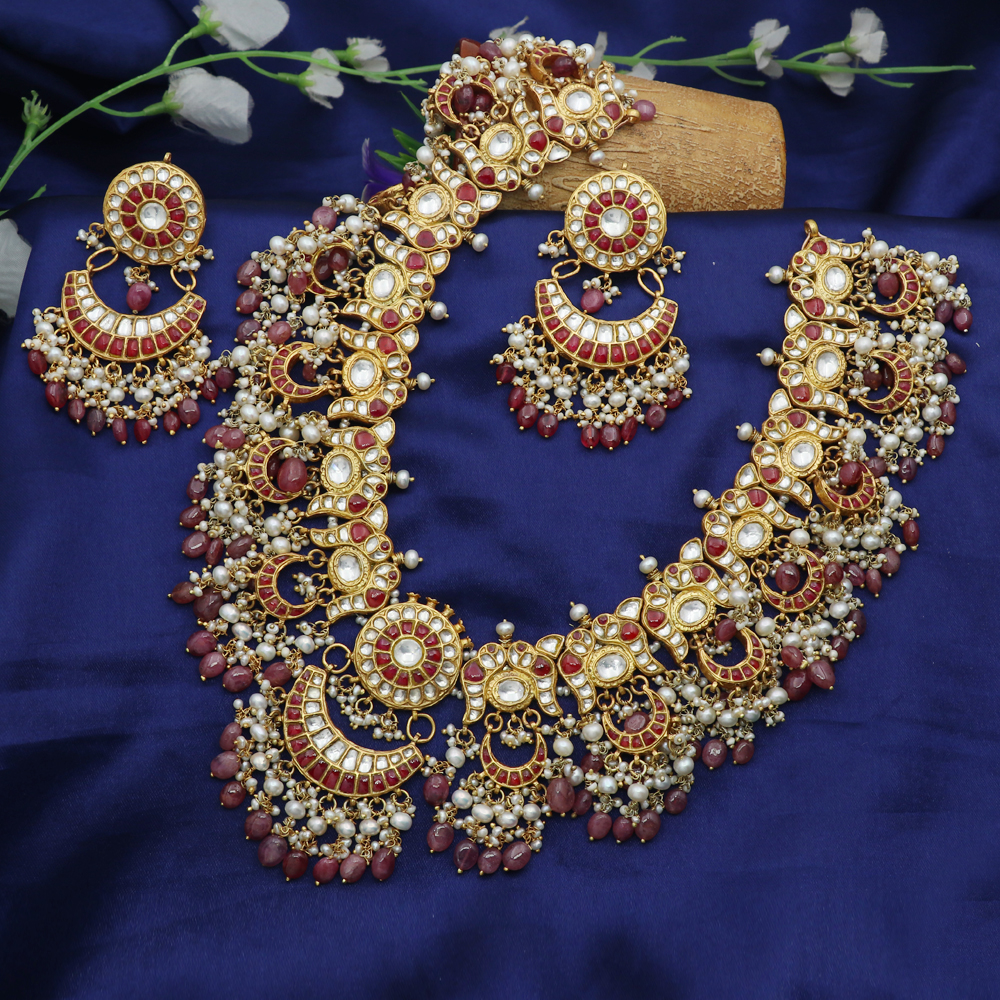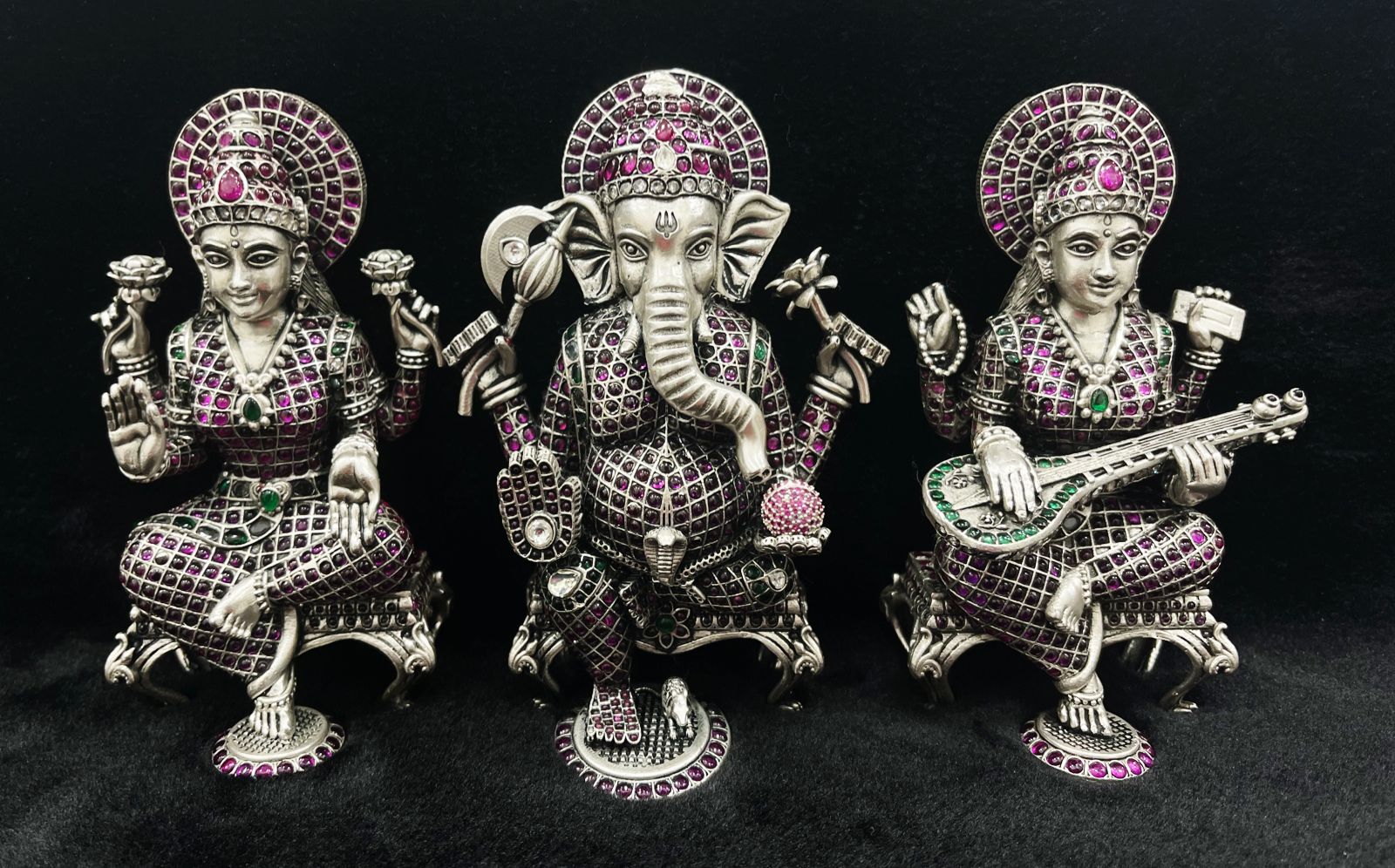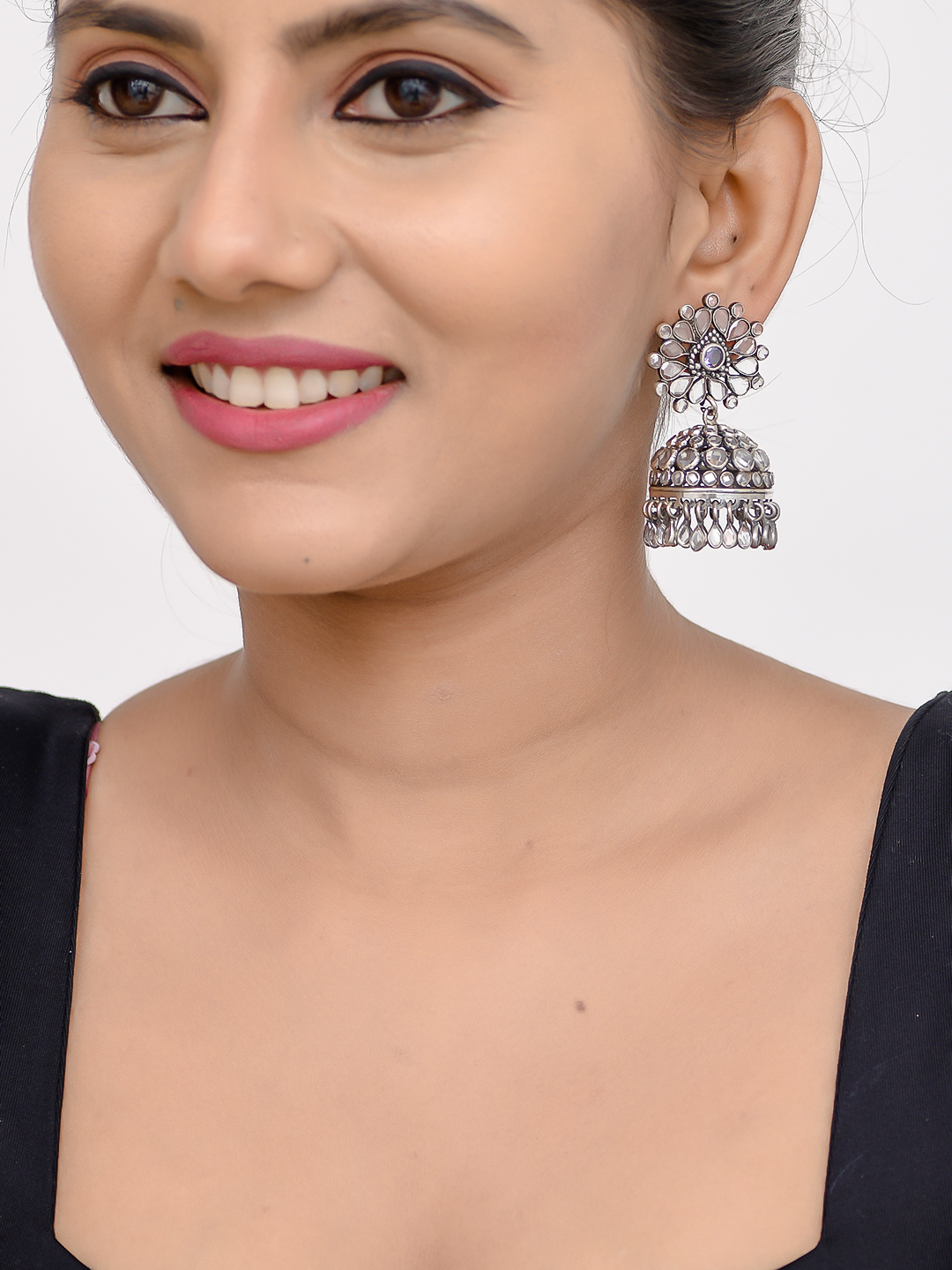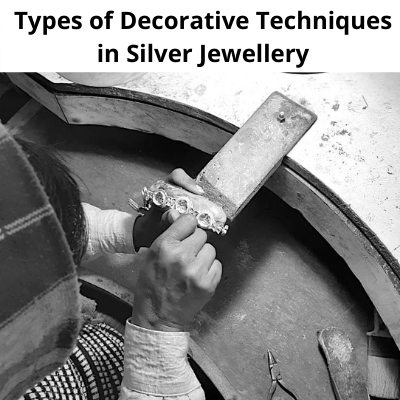Types of Decorative Techniques in Silver Jewellery
Types of Decorative Techniques in Silver Jewellery
Jewellery is considered to be decorative art. Jewellery is one of the oldest categories of precious metalwork. There are many different types of silver jewellery, including silver crowns, silver tiaras, silver necklaces, silver earrings, silver amulets, silver bracelets, silver rings, silver studs, silver brooches, silver torcs, silver chains, silver tie-pins, silver hat-pins, silver hairpins, silver belt, silver anklet, silver bracelets and toe rings. There are many kinds of silver jewellery decorations done with different techniques and are done with different skills, materials, machines and craftsmanships.
Three important silver jewellery decorations are :
1. Meenakari Technique -
Meenakari or Meena Kari or Mina Kari in silver jewellery is an art of painting or embellishing vibrant colours in dramatic motifs of birds, paisleys, flowers and leaves etc. Enamelling is an old and widely adopted technology, for most of its history mainly used in jewellery and decorative. Since the 18th century, silver jewellery enamels have also been applied to many metal consumer objects, such as some Cooking Vessels, steel sinks, and cast-iron bathtubs. It has also been used on some appliances, such as dishwashers, laundry machines, and refrigerators, and on marker boards and signage. Enamel is a type of allochromatic glass that consists usually of quartz sand, iron oxide, potassium oxide (potash) and borax (flux). These components form a transparent and colourless fondant after firing at temperatures between 700 and 900 degrees Celsius. Their plethora of colours is established by the addition of different metal oxides and/or chlorides. After thoroughly crushing and washing these materials a hydrated mass is formed (a fondant) which is then applied on a suitable, and completely clean metal (typically gold, silver or copper alloys). Enamel can be applied to Silver jewellery surfaces with engraved lines, engraved cells and raised borders that are fused at high-temperature ovens creating a vitreous (glassy) surface. There are various kinds of silver jewellery meenakari work depending on whether the enamel is to appear opaque, transparent or translucent.

2. Jadau Technique-
Jadau work is complicated and involves a team of craftsmen, each of whom must know his work very well. The silver jewellery takes a long time to make and setting just four to five stones can take a whole day. Each craftsman has a specific task. Jadau is primarily an engraved silver jewellery work. Jadau has been particularly practised in Western Indian states of Rajasthan and Gujarat since the Mughal rule. It is worn particularly during auspicious occasions and events like marriages, engagements.

3. Tarkashi Technique-
This highly skilled art form is more than 500 years old and is traditionally done by local artisans on the Eastern shores of India. The silver jewellery filigree artists work with an alloy of 90% or more pure silver. First, the lump of silver is placed into a small clay pot and the two are put into a bucket full of hot coals. The temperature is regulated through a bellows that is hand operated by a crank. The melting process takes about ten minutes and then the silver is poured into a small, rod-like mold and cooled by submerging the rod in the water. It is then placed into a machine that will press the rod into a long, thin wire. This tedious and physically demanding process had been done traditionally by hand and took two men to turn the crank.






